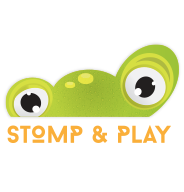Thank you for visiting! Have more questions we should include here? Please let us know.
Why would a parent want Stomp and Play offered at their school?
The number one reason many parents love Stomp and Play is that their child is involved in a music and movement program that is scheduled into their child’s preschool day!! By offering a hands on approach each child will develop a positive outlook toward school, a better appreciation of the world around them, and acquire a love for learning through movement. Invite Stomp & Play to your school.
Where do you teach classes?
Stomp and Play classes can be held in many settings. Some perfect examples would be an extra classroom, fellowship hall, outside, and a large entry way. Please support our schools and community partners.
I would like to implement Stomp and Play, does my preschool program have the time?
Yes! We love to work with children first thing in the morning. However, we will work together to schedule an ideal time to implement our programs. Invite Stomp & Play to your school.
What are the responsibilities of the teachers and the preschool?
Stomp and Play will be responsible for all facets of our classes form beginning to the end. A Stomp and Play instructor will pick up and return the students to and from class. They will be responsible for set up and clean-up for area being used, and provide all equipment for classes and lessons. Any communication about our program will take place directly between Stomp and Play and the parents. A monthly newsletter will go home with the child to inform the parents of the lessons and activities. Read Policy and Procedures.
How long are Stomp and Play’s lessons?
Each lesson is approximately 35 to 40 minutes from pick-up time to drop off time. Our program runs from end of August to May/June, depending on public school calendar. View calendar.
Why is music and movement important?
Stomp and Play provides a music and movement program for preschool age children which allows a child to experience invigorating auditory, visual, language, and motor activities which fosters early childhood brain development. The children will have an opportunity to participate in singing, playing, talking, exploring objects, and physical space which are just some of the ways to stimulate brain development. The language portion of the brain is enhanced greatly by interaction with others due to the fact the brain can connect words with objects and experiences. Movement gets the brain going and music will boost learning. Read more.
